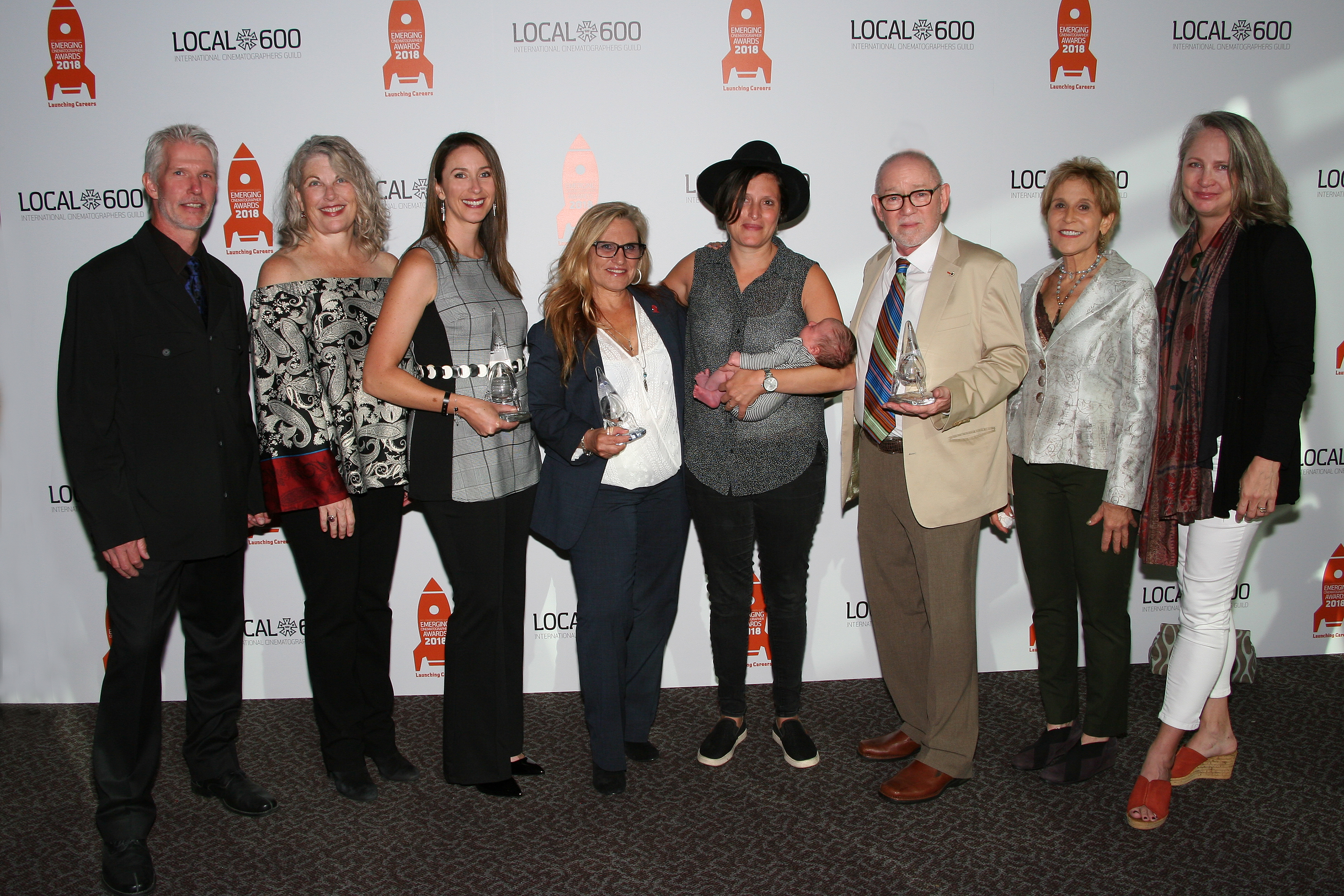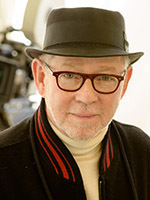
Steven Poster, ASC on the Importance of NAB and Other Issues
The ICG National President discusses the need to understand how new technology can affect union members, key safety and collaboration issues and the future for cinematographers.
On the eve of the annual National Association of Broadcasters Show in Las Vegas (April 6-11), Steven Poster, ASC — National President of the International Cinematographers Local 600 — spoke with American Cinematographer about investigating new technology, joint efforts with the ASC to strengthen the role of cinematographers in production and post, key safety issues, and reaching out to the next generation of cinematographers.
American Cinematographer: The 2019 NAB Show is here and Local 600 will be in attendance, of course. What are some goals for the ICG at the event?

Steven Poster, ASC: We get involved by investigating new technologies to determine how they might impact our members and their work and what we feel might fall under our jurisdiction. This has been of primary concern since the advent of digital technology as the very way we work has been altered, job descriptions have changed and new positions created. We took over digital downloading after a jurisdictional investigation found that it did come under our work. We are now investigating how 5G is going to affect us, as we think that’s going to result in a huge change in how technology is used on the set. This is how we look at everything. That’s how we determined some years ago that drones were going to become a major new player in the production space. Michael Chambliss [business representative for Local 600] and I went to IBC one year and saw a demonstration of two drones flying around in a cage — dancing together in a mesh enclosure so they wouldn’t kill anybody. And upon seeing that, we just looked at each other and immediately knew drones were going to have a major impact on our industry and our members. It was a major revelation, and without going to these kinds of trade shows, we can’t stay on top of the technology and tools that will affect the future and are essential to our members. NAB is an incredibly important venue for that, as is Cine Gear Expo, and IBC, as I mentioned.
How did the April 9 collaborative speaking event with the ASC — “The Cinematographic Imaging Process: Where Does it Begin and End?”— come about?
Many years ago, my mantra was that the Holy Grail for digital production was going to be end-to-end, device-independent color management. And we have come so far with that these days, and the true reality of that has really come to fruition with tools such as the ASC Color Decision List [ASC CDL] and the Academy Color Encoding System [ACES], but there are new things coming on top of that and will fit right into ACES. And this is where the jurisdiction and influence of the director of photography is crucial from the beginning to the moment that the image appears on a screen, whatever screen that may be — theatrical, television or other device. It’s crucial that the people who design and implement the creation of the image are involved in the entire process, in every step. Previs is a wonderful tool, but the people who do it — for the most part — don’t have a concept of what the cinematographer is, and in postproduction, it’s so easy for people to fundamentally alter the image. So we have to insinuate ourselves into the post process in order to control what we’d initially created. Of course, this is always conditional with the director of the project, but if we don’t make every effort to do that, the director of photography position will be diminished, and whatever the final output of the process is, well, it will be difficult to call it “our work.” So, the purpose of this discussion is to address this complex issue, and organizing it with the ASC was great as both organizations know its importance.

This is really an information battle, isn’t it?
It’s a jurisdictional battle as well, and that’s why [ASC President] Kees [van Oostrum] and I, as presidents of our respective organizations, got together on this and are working together. And the more the ASC and ICG work together, the more influence we will end up with. And that’s what really resulted in this joint panel at NAB. It’s a cliché, but it’s true that we’re joined at the hip. Many of Local 600’s members are members of the ASC, and all working members of the ASC belong to the union. I’m a member of both, and I’m a past president of the ASC, so we have a deep relationship, and working together comes naturally. And it’s essential that we together strengthen the role of the cinematographer every step of the way. One great asset we have in this is the ASC Motion Imaging Technology Council [MITC, chaired by Curtis Clark, ASC], which I co-founded [in 2003] when I was president of the ASC. We saw the rising tide of digital technology, and that the role of the cinematographer could be completely marginalized if we did not act and become part of the discussion. The founding of the committee brought together a lot of the key players and experts in the digital transition, and helped ensure that the cinematographer would not be left out of the process. That said, we have to continue to work to remain engaged and a play a leading role into the future, because the technology continues to evolve.
As a veteran in the field, are you still excited by the new tools that are introduced at the NAB Show every year?
If anything, I’m more excited than ever because the tools being offer to us keep getting better and better all the time, and trying to understand how they work together in this changing ecosystem is a huge undertaking. And one that never ends. Fortunately, I have experts to help me get a handle on what the state of the art really is. I’m running on the theory that you can teach this old dog new tricks.
Well, staying ahead of the technological curve is probably one of the most important aspects of being a working professional cinematographer.
Absolutely, and the creative curve as well. And that curve constantly twists and turns in new directions.
Do you feel technological progress in image making is slowing, or at a plateau? Or are there areas in production, post or exhibition that you feel are still showing real creativity in terms of new products to consider?
It’s advancing almost daily. And when you turn around and look at what’s being offered in terms of augmented reality or virtual reality, things are changing radically, and we have to understand how the role of the cinematographer is going to help shape those new arenas. This also goes for the advent of computational photography — such as the [Lytro] light-field plenoptic camera system that created so much interest a few years ago — that will be a major disruption in our traditional process as the final shaping of the image may be almost entirely shifted into postproduction. That’s a long way off, as the technology is in its infancy and not ready for production use, but it’s visible on the distant horizon.
Local 600 has been very vocal about set safety. Of course people respond favorably to that message, but do you see behavior changing? And how is the union looking to keep that discussion in the forefront of peoples’ minds?
Organizations come to us all the time now because they’re looking for the kind of tools we’ve developed that will help them address safety issues and implement safety rules. We’ve developed the ICG Safety app, which is a very thorough tool that helps the user understand safety issues under a wide range of situations and conditions. What is safe and what isn’t? Every safety bulletin ever issued by the ICG is native in the app, so you don’t even need an internet connection to use it while on location. And we also consider sexual harassment and predatory behavior to be a safety issue, and that’s built into the app as well. We have also created a module with a code that’s available to every cinematography organization in the world to use by inputting their own contact numbers and other information, so the app can be customized for use anywhere. And this includes working with cars, firearms and ammunition, powerboats, trains, and any other kind of situation that’s common in production. And ICG is deeply involved in creating new bulletins to address new issues as they come up, and offer new ways to communicate these issues. Last year, for example, we released our video on “Free Driving” — operating handheld cameras in moving vehicles — and the devastating injuries that can occur if things go wrong:
We’re also working on a video about the dangerous affects of operating heavy camera rigs for extended lengths of time, which can cause tremendous damage to the spine. And we hope to help set a standard on this kind of work, because it’s very dangerous for operators running around with 50 or 60 pounds of gear strapped to them for hours upon hours each day with just brief opportunities to rest when batteries or cards are swapped out. That’s very prevalent in the unscripted world, but increasingly so in narrative production because the directors like to keep rolling and roiling and rolling without any understanding of the damage that they might be doing to their crew. We want everybody to stay safe.
What are some of the overarching goals for Local 600 over the next year?
The growing collaboration between the ICG and the ASC is very heartening. And we, as an organization, are involved with the entire IA, as well as the Motion Picture Academy, as many of our members are members there, including its president, John Bailey [ASC], who is an incredibly considerate and smart man. And the Television Academy, as well, of course. So, collaboration is fundamental to creating a future that will best serve everyone. Our Emerging Cinematographers Awards program has also become an important event because not only is it great for our members, but it’s a collaboration with the ASC, talent agencies and the Directors Guild, and a way to recognize work by some of our newest talent, which is incredibly important to their further development. You can’t underestimate the importance of that kind of encouragement. It may make the difference in someone trying to make that next step. The entrants to the Emerging Cinematographers Awards are not yet union cinematographers, but have done short films over the next year, and we select usually 10 honorees for their outstanding work. And we — along with all our collaborators — help boost these people up, hopefully creating a new opportunity for their careers. It’s also a way for the next generation to eventually rise up and become a part of the establishment. It involves them in that essential process.
Looking back, do you remember when you first got a taste of that recognition for your work as a cinematographer? Did it help you in that way?
I do. In 1972, I did a short film in Chicago — where I lived — that ended up getting some attention. It started off very much as, “Hey, I have some film, so let’s borrow a camera and shoot something,” but it ended up winning a Best in Festival award at the Atlanta Film Festival. That ended up being my first mention in American Cinematographer magazine, and it was amazing. To get that kind of recognition at that time in my life was hugely important. I’d been reading American Cinematographer since I was 14, and to have my name in there was extraordinary, and I’ve never forgotten that feeling. So I understand the importance reaching out to new talent and our next generation.






